#sasanian empire
Explore tagged Tumblr posts
Text
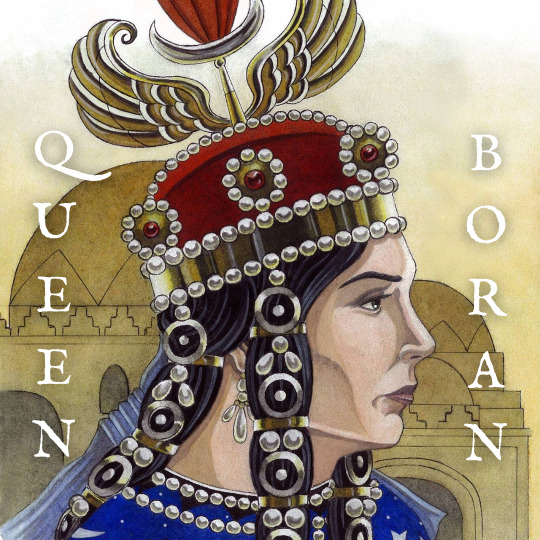
The first woman to rule the Sasanian Empire in her own right, Boran (590-632) did her best to bring peace and stability during her brief reign.
A crumbling empire
The Sasanian Empire was the last pre-Islamic power on the Iranian plateau. Boran was the daughter of King Khosrow II. Her mother was possibly the Byzantine princess Maria.
Boran was married to her brother, Kavad II, who overthrew their father in 628. His reign was short-lived, and he was succeeded by his son from another wife, Ardashir III. As a child, Ardashir had no real authority and was soon assassinated by the usurper Shahrbaraz.
Boran then had Shahrbaraz killed and took the throne. The exact timeline of her reign is debated, with some sources placing its beginning in 629 and others in 630.
To further complicate matters, Boran’s sister, Azarmidokht, ruled briefly in 630. This suggests that Boran was dethroned and later reinstated. Azarmidokht was described in later sources as a just, intelligent, and attractive woman. She was later depicted as seated, wearing a red embroidered gown and sky-blue studded trousers, holding a battle-axe in her right hand and leaning on a sword in her left. She was likely murdered, though the details of her death remain uncertain.
Stabilizing the empire
The situation Boran faced was dire, with both external threats and internal factional conflicts. Once on the throne, she immediately worked to strengthen her legitimacy by associating herself with her father and imitating his coinage. She proclaimed herself the "Bringer of Glory" and the "Restorer of the Race of Gods."
Boran was deeply committed to justice and worked to provide stability for her subjects. She issued open letters expressing her desire to improve their lives. She reduced taxes, which had been excessively high during her father’s reign, and focused on rebuilding infrastructure, including roads and irrigation systems that had fallen into disrepair.
She ensured the empire’s prosperity by minting a significant number of coins. She also improved relations with the Byzantine Empire, previously an adversary, and sent an embassy to Emperor Heraclius, which was well received.
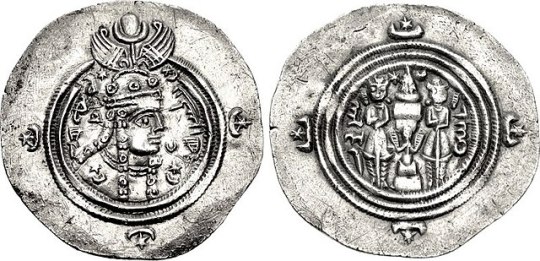
One of her most remarkable achievements was forging an unprecedented alliance among rival factions, allowing the Sasanian Empire to temporarily resist the Arab invasions.
Despite her efforts, Boran’s period of consolidation was short-lived, and the empire was already in decline. She died around 632, either from illness or assassination. The identity of her immediate successor is unclear—some sources claim it was her nephew, Yazdegerd III, while others suggest that it was her sister, Azarmidokht. In 651, the Sasanian Empire ultimately fell to the Islamic Caliphate.
Boran’s dedication earned her a place in Ferdowsi’s epic, the Shahnameh (Book of Kings).
If you enjoy this blog, consider supporting me on Ko-fi!
Further reading:
“Azarmigduxt”, Encyclopædia Iranica
“Boran”, Encyclopædia Iranica
Haeri Shahla, The Unforgettable Queens of Islam: Succession, Authority, Gender
Hodge Mehdi Malek, Vesta Sarkhosh Curtis, History and Coinage of the Sasanian Queen Bōrān (AD 629-631)
Hussain Ashna, “Boran”, in: Goucher Candice (ed.), Women Who Changed the World, Their Lives, Challenges, and Accomplishments Through History
#history#women in history#7th century#historyedits#women's history#women's history month#boran#iran#iranian history#sasanian empire#ruling queens#powerful women#Azarmidokht
64 notes
·
View notes
Text
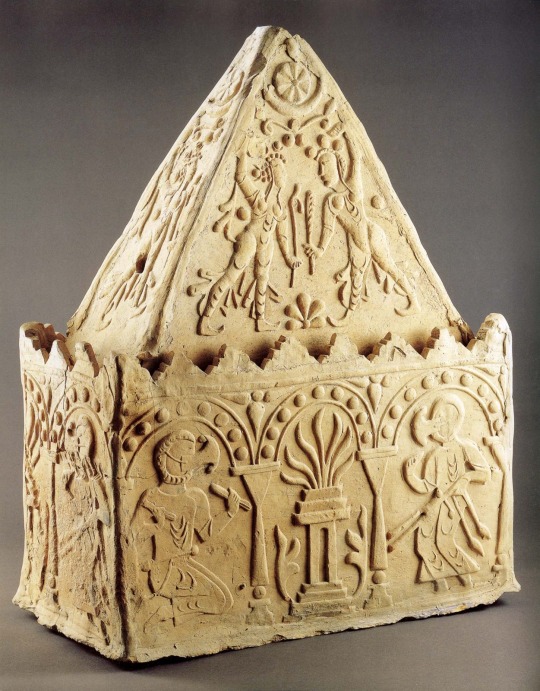
Look at this beautiful ossuary.
#history#ancient history#zoroastrianism#ancient iran#ancient persia#sasanian empire#sassanian empire#zoroastrian priests#sogdian#fire temple
57 notes
·
View notes
Text
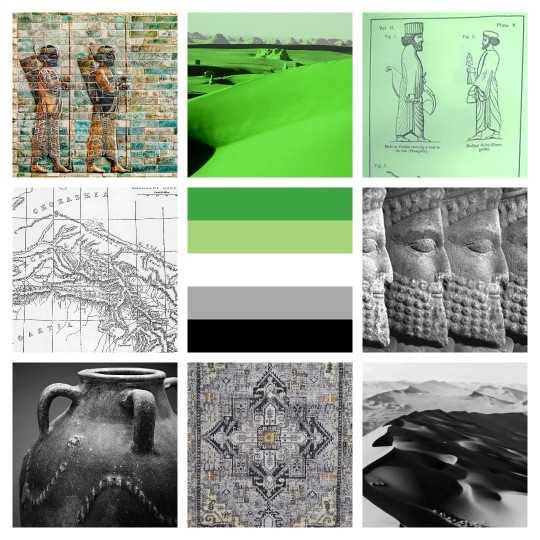
Ancient Iran, Achaemenid, Parthian and Sasanian empires based aromantic moodboard~ ^^ For an anon!! Hope you like~
Want one? Send an ask! -mod Jay
#ancient#ancient iran#iran#iranian#ancient iran aesthetic#achaemenid#achaemenid empire#parthian#parthian empire#sasanian#sasanian empire#empires#aro#aromantic#aro pride#arospec#arospec pride#pride#edits#lgbt#lgbtqia#lgbtqa#flag edit#flag edits#pride flag edit#pride flag edits#edit#moodboard#moodboards#mood board
34 notes
·
View notes
Text










Women’s History Meme || Empresses (3/5) ↬ Shirin شیرین (d. 628)
The connection between eros and power has long held a great fascination for people. In literature, history, and art, archetypal (in C. G. Jung’s sense) presentations of this theme have been widely disseminated. The story of the Christian Shirin, who rose to become wife of the Persian shah Khosrow II (590-628), is a fascinating example of the link between eros and power. Over the centuries, historians, poets, and artists have taken an interest in her, and she has retained a presence in both East and West until the present day. Byzantine and Syriac writers among her contemporaries, such as the church historian Evagrios, the monk Strategios of St. Saba near Jerusalem, the Byzantine imperial secretary Theophylaktes Simokates, the author of the anonymous Syriac Chronicle, and the Armenian Pseudo-Sebeos, referred to the Christian queen in their works, which represent the first stage of the history of the Shirin theme. Around the year 800, the Byzantine historian Theophanes Confessor attempted to place these events in his chronicle of world history. Only vague reports of Shirin, preserved for us in the Frankish Chronicle of Fredegar, reached the West in the seventh century, but in the Orient, she remained a presence, especially in her faith community, the Apostolic Church of the East, which is usually referred to in the West by the incorrect name “Nestorian.” The East Syriac Chronicle of Seert in Kurdistan and the twelfth-century patriarchal biographies of the Syrian Mari ibn Sulaiman represent the second stage, as it were, of the reception and reworking of this theme in a time which no longer had any immediate connection to the events, since political circumstances had changed dramatically. — Shirin: Christian Queen Myth of Love: A Woman Of Late Antiquity: Historical Reality and Literary Effect by Wilhelm Baum
#women's history meme#shirin#sasanian empire#iranian history#asian history#women's history#history#nanshe's graphics
21 notes
·
View notes
Text

2 notes
·
View notes
Text

Persian manuscript describing how an ambassador from India, probably sent by the Maukhari King Śarvavarman of Kannauj, brought chess to the Persian court of Khosrow I.
The same scene from another manuscript.An illustration from a Persian manuscript "A treatise on chess". The Ambassadors from India present the Chatrang to Khosrow I Anushirwan, "Immortal Soul", King of Persia
From Wikipedia: https://en.wikipedia.org/wiki/History_of_Iran#/media/File:A_treatise_on_chess_2.jpg
#iran#india#iranian#persia#persian#chess history#chess#Maukhari#sasanian empire#sasanian dynasty#pre-islam persia#medieval#6th c. persia#6th century
6 notes
·
View notes
Text




Gaul
New Kingdom
Persia
Qin Empire
#Hetalia#Hetalia ancient#gaul#Hetalia gaul#Mama gaul#Hetalia mama gaul#Hetalia oc#Hetalia ancient egypt#Hetalia New kingdom#Hetalia mama egypt#Mama egypt#Hetalia persia#Persia#Sasanian Empire#Hetalia Sasanian Empire#Hetalia china#Hetalia qin empire#qin empire#Immedorica Bonnefoy#Merit Iset Hassan#Wang Yao#Nabuhaithu Bel-Anzu
0 notes
Photo

Ancient Iranian Carving Seized at a London Airport
An ancient sculpture illicitly carved from a rock relief in Iran will soon go on display at the British Museum before being repatriated to the National Museum in Tehran.
Carved in calcareous limestone, the sculpture depicts a standing male figure with an ornamental headdress. The piece likely hails from the 3rd century C.E. when the Sasanian Empire ruled greater Iran, according to the Guardian.
“It belongs to a period when Iran was the center of a powerful empire stretching from Syria to the Caucasus and Central Asia, and with its capital at Ctesiphon, south of present-day Baghdad,” St. John Simpson, an archaeologist and senior curator the British Museum’s department of the Middle East, told the paper. “The Sasanians were powerful rivals of Rome, and famous today for their fine silverwares and cut glass.”
The relief was seized at the Stansted airport outside of London, where border officers pulled the item aside because of its suspicious packaging—an unpadded, slapdash crate held together by nails. Inside was the carving, which had recently been excised with an angle grinder.
“We almost never come across a case of something being cut out of the ‘living rock,’” Simpson said. “That’s a level of brutalism that surpasses anything.”
Exactly where the carving came from remains a mystery, though context clues may help to narrow the list of potential locations. Roughly only 30 Sasanian rock reliefs are known to exist today, and almost all them came from the small Fars Province in southwest Iran.
Simpson suspects it “comes from somewhere in the Shiraz area” of the province. “Stylistically, it is similar to one known in the region,” he explained. “I think it probably is part of a big sequence. There might be more bits out there.”
The subject of the piece is similarly difficult to determine. “The lack of an inscription makes it impossible to identify the person depicted, but his dress and diademed headdress signifies him as a person of high rank,” the curator said. “His gesture of greeting and submission, with a raised bent forefinger, is a feature of Sasanian art when figures are in the presence of royalty, which suggests that this was part of a larger composition, with the king to the right and perhaps other figures behind.”
Interpol and the National Crime Agency have both investigated the object, but no arrests have yet been made. An internet auction site in the U.K. was listed as the package’s destination address, but the company claimed not to be expecting it.
Because of its poor padding, the relief broke in two pieces during transport. Conservators have since put it back together.
“The British Museum is committed to contributing to the preservation of cultural heritage in the U.K. and globally, partnering with law enforcement agencies to identify illicitly trafficked antiquities,” read a statement from the museum. “Objects seized in this way are brought to the British Museum for identification and cataloguing.”
The London institution obtained permission from the Iranian government to display the carving for three months. After that time, it will be repatriated to the National Museum in Tehran.
Simpson called the newly repaired piece “stunningly attractive,” before weighing in on its potential worth.
“The valuation could be anything, really. We’re talking £20 million to £30 million-plus,” ($25 million to $37 million) he said. “There’s never been anything like it on the market.”
By Taylor Dafoe.
#Ancient Iranian Carving Seized at a London Airport#the sasanian empire#rock releif#rock sculpture#ancient artifacts#archeology#archeolgst#history#history news#ancient history#ancient culture#ancient civilizations#stolen#looted
49 notes
·
View notes
Text
A bulla (Medieval Latin for "a round seal", from Classical Latin bulla, "bubble, blob"; plural bullae) is an inscribed clay or soft metal (such as lead or tin) or bitumen or wax token used in commercial and legal documentation as a form of authentication and for tamper-proofing whatever is attached to it (or, in the historical form, contained in it).
In their oldest attested form, as used in the ancient Near East and the Middle East of the 8th millennium BC onwards, bullae were hollow clay balls that contained other smaller tokens that identified the quantity and types of goods being recorded. In this form, bullae represent one of the earliest forms of specialization in the ancient world, and likely required skill to create.[1]: 24 From about the 4th millennium BC onwards, as communications on papyrus and parchment became widespread, bullae evolved into simpler tokens that were attached to the documents with cord, and impressed with a unique sign (i.e., a seal)[1]: 29 to provide the same kind of authoritative identification and for tamper-proofing. Bullae are still occasionally attached to documents for these purposes (e.g., the seal on a papal bull).

~ Bulla with signet ring impression.
Place of origin: Near Eastern, Iranian, Persian
Period: Sasanian
Date: A.D. 226–651
Medium: Clay
170 notes
·
View notes
Text

Rhyton (silver with mercury gilding and glass inlays) in the shape of a woman and water buffalo, from the Sasanian Persian Empire. Artist unknown; 7th century AD/CE. Now in the Cleveland Museum of Art.
#art#art history#ancient art#Persia#Persian art#Sasanian Dynasty#Sasanian art#metalwork#silver#silverwork#rhyton#drinking vessel#7th century art#Cleveland Museum of Art
162 notes
·
View notes
Photo
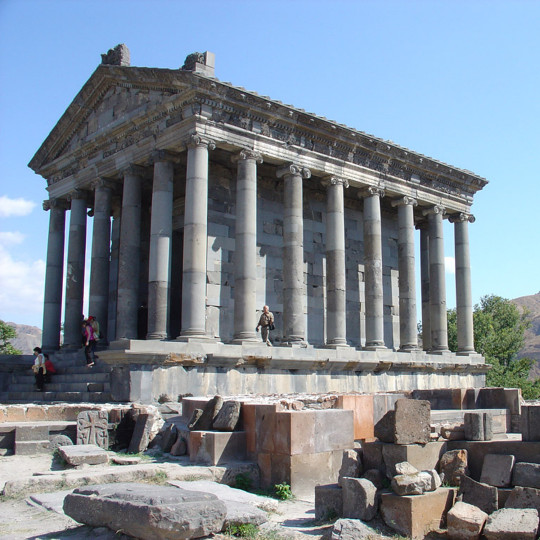
Ancient Armenia, located in the south Caucasus area of Eurasia, was settled in the Neolithic era but its first recorded state proper was the kingdom of Urartu from the 9th century BCE. Incorporated into the Persian Empire of Cyrus the Great in the 6th century BCE, the Orontid dynasty ruled as Persian satraps, a function they performed for their next overlords the Macedonians and Seleucid Empire into the 3rd century BCE. Under the Artaxiad and Arsacid dynasties the country flourished but was often caught between the ambitions of Parthia and Rome, and then the Sasanian and Byzantine Empires. The boundaries of the state varied considerably over the centuries but such common factors as religion and language were united by long-lasting dynastic clans, which gave Armenia its own unique identity throughout antiquity.
145 notes
·
View notes
Text
Castlevania Nocturne S2 - Drolta's Timeline, wtf Netflix?
Uh oh. I think the writers messed up. Drolta tells Erzsebet in 2x7:
"I wandered the Earth for a thousand years seeking a vessel. And then I found you, the perfect human monster. For nearly 200 more, I prepared you for your destiny."
That means Drolta's been a vamp for approx 1200 years. But the show takes place in 1793 (King Louis 16th is guillotined in 2x3). And we KNOW Drolta was turned into a vamp in 1199.
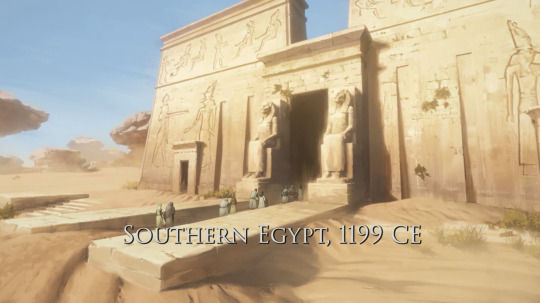
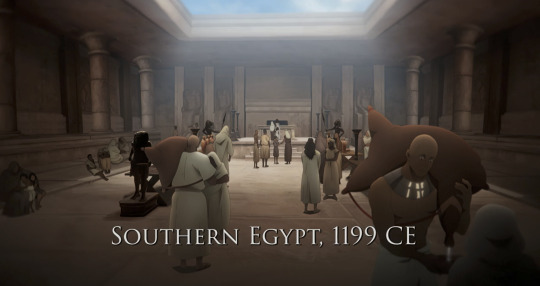
Meaning Drolta's only been a vamp for 594 years. 🤨
But check this: 1793 - 1200 = 593. 👀 As in, Drolta's speech to Erzsebet implies that she was turned into a vamp in 593 AD--when Egypt was still in the Roman Empire, right before the Sasanians invaded, and conquered Egypt in 618 AD.
And Drolta's temple was attacked by obvs foreign vampires....
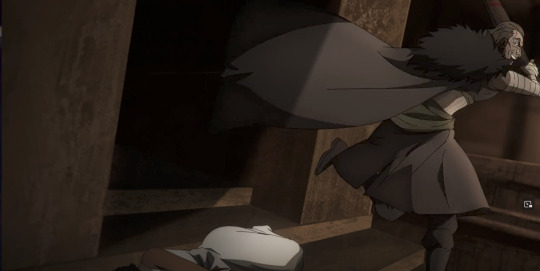

And this dude's got a vaguely familiar looking helmet....



So now I'm wondering if there wasn't some HUGE discrepancy somewhere, where Drolta was originally supposed to be oooold AF, who was human way back in Roman Late Antiquity, when Egypt was still pagan (more or less; Christianity was on the rise); before the Sasanians attacked & she became a vampire.
And for whatever reason, that timeline was pushed down to the Middle Ages & the Ayyubid Sultanate instead (when Egypt was Muslim and the pagan traditions were long buried).
So which one is it, Netflix? Is Drolta 1200+ years old, or 500+? 🤔
To be more precise, Drolta said this in 2x5:
Her power strengthened by tasting your holy blood. Drop by drop. Sip by sip. Year by year. For 175 cycles of the sun. She will not burn. And you will walk the earth again.
So we can actually knock off 25 years from 1200, and say she's 1175 years old, going by what she said in 2x7. Meaning she would've been turned in 618, the EXACT year that the Sasanians invaded Egypt.
37 notes
·
View notes
Note

true?
TRUE ✅
[THIS POST HAS BEEN FACT CHECKED BY PATRIOTS OF THE SASANIAN EMPIRE]
612 notes
·
View notes
Text
This article is the first academic study of the reception of rabbinic literature in South Korea, where a series of books titled Talmud (T’almudŭ) consistently appears on best-seller and suggested reading lists for elementary school students, fills university library stacks, and has become the topic of national and diplomatic conversations
As will become clear below, the Korean books that bear the title Talmud are not Korean translations of the entire Babylonian Talmud. The Babylonian Talmud, redacted in antiquity in the Sasanian Empire, is an extensive Jewish compilation of legal and narrative discussions organized as commentary on the Mishnah, and continues to be studied in traditional Jewish and academic settings. In its standard printing, the Babylonian Talmud is around 6,000 pages. The editions published in Korean entitled Talmud are shorter anthologies of stories and sayings collected from the Babylonian Talmud as well as other rabbinic texts, including midrash.
We have identified four primary ways in which the books are presented to readers; some editions combine two or three of these primary features:

It was originally written by an american Rabbi Tokayer for Japan, he called it 5,000 Years of Jewish Wisdom: Secrets of The Talmud. very odd
33 notes
·
View notes
Text
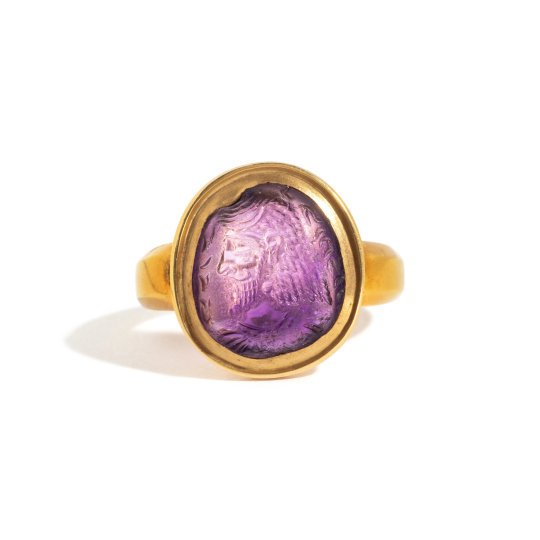
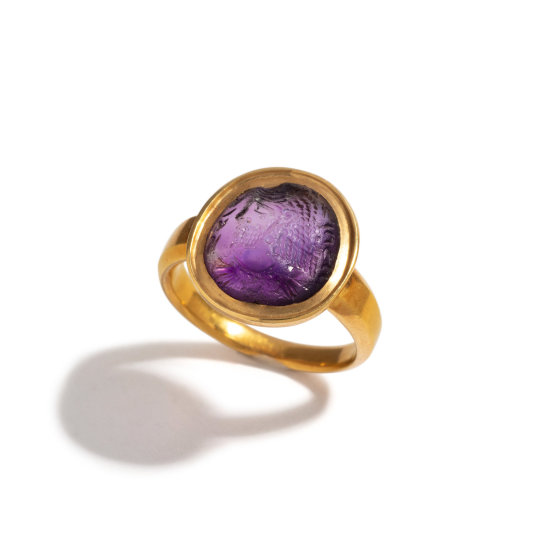
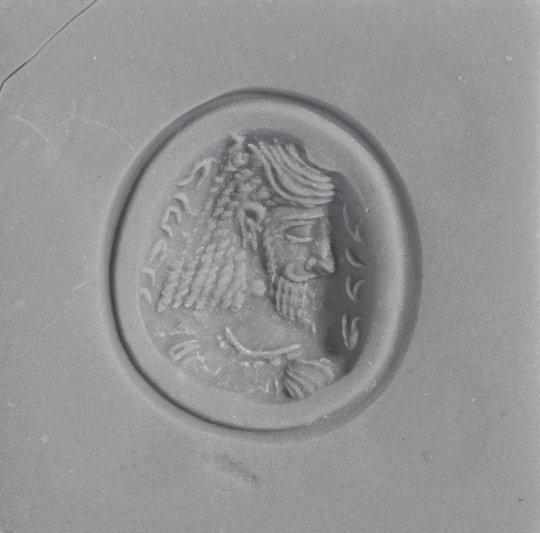
Gold and amethyst intaglio ring with royal portrait and Pahlavi inscription, Sasanian Empire, 5th century AD
from Hindman Auctions
211 notes
·
View notes
Text
10 Jewish Women from History Part 2
Shushandukht (4th to 5th centuries, Persia)
Jewish wife of a Sasanian emperor and mother of another. She was said to be the daughter of an Exilarch. She reputedly created the Jewish neighborhoods of Jouybareh in Isfahan and also communities in Susa and Shushtar. She is believed to be fictional by some.
Benvenida Abrabanel (1473-1560s, Italy)
A Sephardic philanthropist, banker, and businesswoman mentioned in literary, rabbinic, legal, and archival sources. Born to a prominent Spanish family, the Abravanel family, she received an education in both Jewish and secular subjects. Following the Expulsion of Jews from Spain in 1492, her family moved to Naples, where she became the tutor of Eleanor of Toledo. After the Holy Roman Emperor declared an expulsion of Jews in 1533, she co-protested and managed to get the order postponed by ten years. She and her family eventually moved to Ferrara. After her husband's death, she was made heir to almost all of his property, and she took over his business affairs, opening five banks in Florence.
Shlomtzion (1 century BCE, Judea)
A regnant queen of Judea, and the wife of Aristobulu I and Alexander Jannaeus. She ruled for nine years in the times of the Hasmonean dynasty. On his deathbed, Alexander trusted the government to his wife instead of his sons. She installed her eldest son as high priest and reestablished the Sanhedrin, and protected the Pharisees. Judea enjoyed much prosperity under her reign.
Licoricia of Winchester (1200s-1277, England)
An English Jewish businesswomen, described as the most important Jewish woman in medieval England. She was a moneylender, and appeared to have had a close relationship with King Henry III. She first appears in records from 1234 as a young widow with three sons and a daughter. In 1242, she married her second husband, who was known as the richest Jew in England. After her husbands death, she was detained by the king so that he could acquire part of her husband's estate; however, she repurchased his estate for 5,000 marks. Over the next thirty years after she was released, she became a highly influential businesswoman.
Esther Handali (?-1588, Ottoman Empire)
A Sephardic Jew reportedly from Jerez de la Frontera in Spain, she was married to a Jewish merchant who sold products to the Ottoman Imperial Harem. Due to the separation of the sexes, she would enter the harem as an agent for her husband. When she was widowed, she took over her husband's business. She was kira, or agent, of Nurbanu Sultan from at least 1566 onward, after Nurbanu became the favored consort of the sultan. She was trusted with political and diplomatic matters, including acting as intermediary between Nurbanu and Catherine de' Medici, as well as contacts in the Republic of Venice. She earned an enormous fortune, and was a benefactor to the Jews of Istanbul, especially widows and orphans and victims of the 1969 fire.
Esperanza Malchi (?-1600, Ottoman Empire)
A Jewish businesswoman in the Ottoman Empire and agent of Safiye Sultan. Reportedly from Italy, she acted as an agent for her husband, a Jewish businessman, in the Ottoman harem. It's difficult to separate her from Esther Handali since their careers overlap. Esperanza was trusted with political and diploamtic matters such as correspondence between Safiye and foreign powers, including the Queen of England.
Qasmuna (11th or 12th CE, Andalusia)
A poet from medieval Andalusia, and the only female Arabic language Jewish poet from the region. Three poems of her have survived. The most famous one is about how she looked in the mirror and decided she had reached the time of marriage.
Sarah of Yemen (6th century CE, Yemen)
A female composer of pre-Islamic Arabic poetry. She was potentially a member of Banu Qurayza, a Jewish tribe which lived in northern Arabia and was one of the major three Jewish tribes, along with Banu Qaynuqa and Banu Nadir.
Wife of Dunash ha-Lebi ben Labrat (920/925-after 985, Morocco or Spain)
Wife of a medieval Jewish commentator, poet, and grammarian from the Golden age of Jews in Spain. She is believed to be the author of a poem on Dunash's exile, making it the only known medieval Hebrew poem written by a woman.
Henrietta Szold (1860-1945, Baltimore)
Born in Baltimore, Maryland, she was the daughter of a rabbi and the eldest of eight daughters. Educated in Jewish studies, she edited Professor Marcus Jastrow's Talmudic Dicitonary, and attended lectures at Johns Hopkins and the Peabody Institute. She also studies at JTS, and studies in the rabbinic school on the promise she would not seek ordination, as the rabbinic school was restricted to males. A religious Zionist, she and six other woman eventually founded Hadassah, the Women's Zionist Organization of America. She funded hospitals, a medical school, soup kitchens, and other services for both Jewish and Arab inhabitants of Mandatory Palestine. In 1933, she immigrated there and helped run Youth Aliyah, an organization that saved 30,000 Jewish children during the Nazi regime. She also supported Brit Shalom, a small organization dedicated to Arab-Jewish unity.
#jewish#jewish women#jewish women's history#feminism#jumblr#there's so little history on Jewish women but for those that are recorded. they're badass.
12 notes
·
View notes